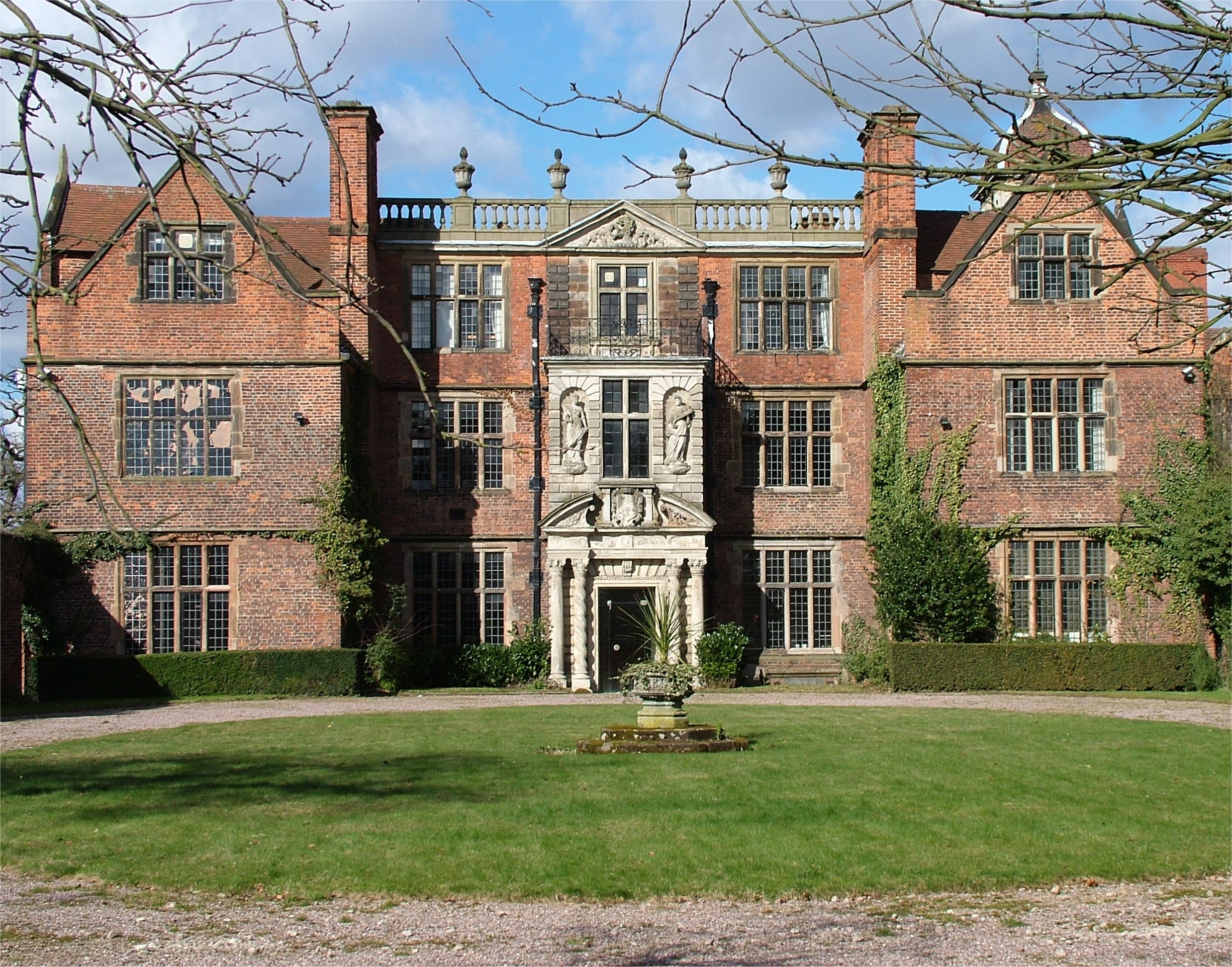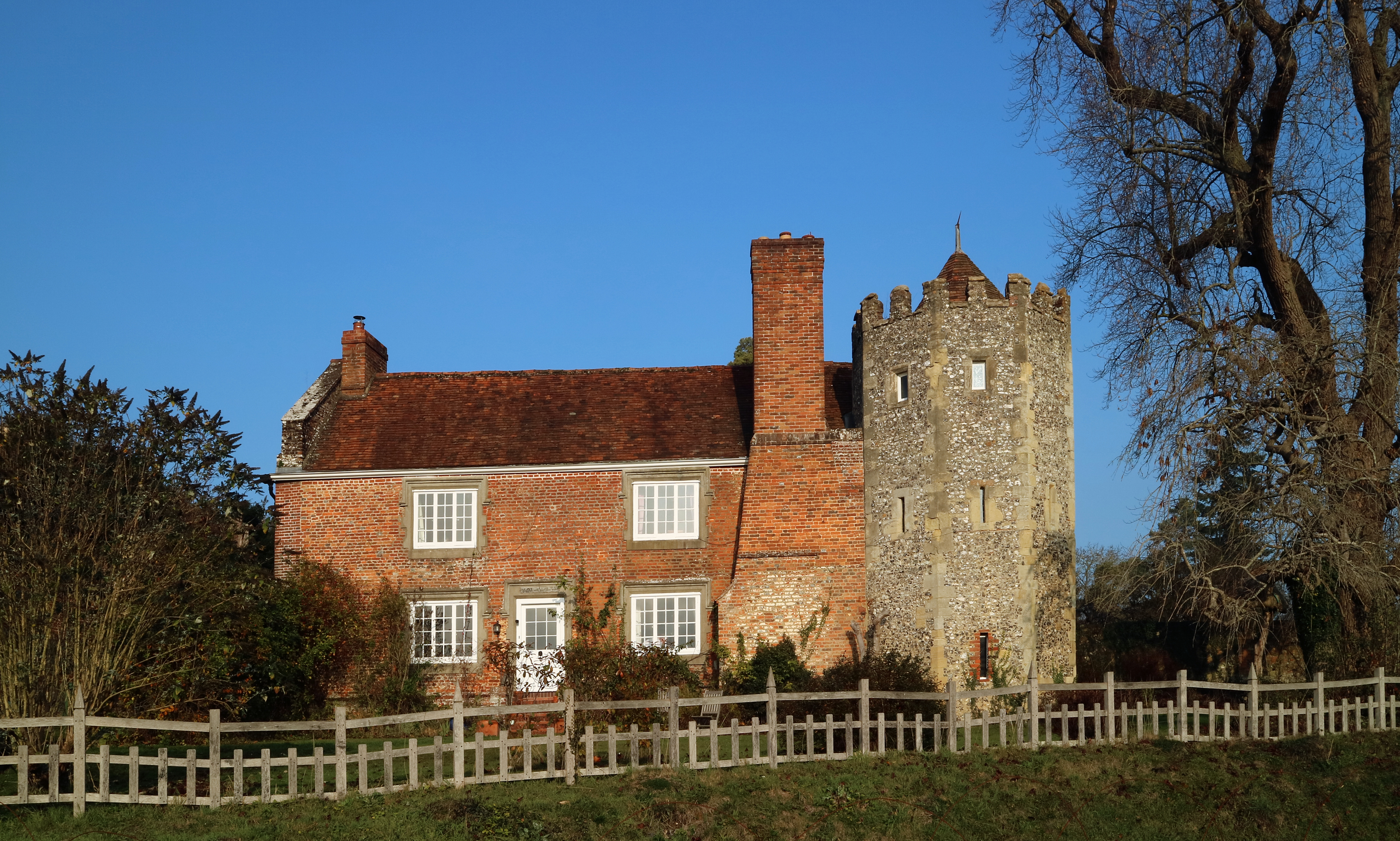|
Newe House
Newe House is a Grade II* listed Jacobean dower house in the village of Pakenham, Suffolk. Newe House was built in 1622 by Sir Robert Bright and today the façade of the house remains largely unmodified. Sir Robert had bought the land surrounding Pakenham from the Bacon family several years before. In the late 1640s it was sold to Sir William Spring, who had been a prominent Parliamentarian during the Civil War. The house remained in the Spring family until the mid-nineteenth century, being used as the family dower house. The Spring family coat-of-arms is still apparent above the main door to the manor. Newe House has been extensively restored by its current owners whose family have owned it since 1947. See also *Spring family The Spring family is a Suffolk Landed gentry, gentry family that has been involved in the politics and economy of East Anglia since the 15th century, as well as holding large estates in Ireland from the 16th century.Joseph Jackson Howard, ‘Spri ... ... [...More Info...] [...Related Items...] OR: [Wikipedia] [Google] [Baidu] |
Newe House, Pakenham - Geograph
{{Surname ...
Newe is a surname. Notable people with the surname include: *Paul Newe (born 1964), Irish footballer *G. B. Newe (1907–1982), Northern Irish politician * Gerard Newe (1908–1982), Northern Irish politician See also * Western Shoshone *Castle Newe *New (surname) New is an English surname, occurring in Britain and countries to which British people have emigrated, including Australia, Canada, New Zealand et cetera. In England, the family name New is particularly known from Warwickshire, Gloucestershire, Worc ... [...More Info...] [...Related Items...] OR: [Wikipedia] [Google] [Baidu] |
Listed Building
In the United Kingdom, a listed building or listed structure is one that has been placed on one of the four statutory lists maintained by Historic England in England, Historic Environment Scotland in Scotland, in Wales, and the Northern Ireland Environment Agency in Northern Ireland. The term has also been used in the Republic of Ireland, where buildings are protected under the Planning and Development Act 2000. The statutory term in Ireland is "protected structure". A listed building may not be demolished, extended, or altered without special permission from the local planning authority, which typically consults the relevant central government agency, particularly for significant alterations to the more notable listed buildings. In England and Wales, a national amenity society must be notified of any work to a listed building which involves any element of demolition. Exemption from secular listed building control is provided for some buildings in current use for worsh ... [...More Info...] [...Related Items...] OR: [Wikipedia] [Google] [Baidu] |
Jacobean Architecture
The Jacobean style is the second phase of Renaissance architecture in England, following the Elizabethan style. It is named after King James VI and I, with whose reign (1603–1625 in England) it is associated. At the start of James' reign there was little stylistic break in architecture, as Elizabethan trends continued their development. However, his death in 1625 came as a decisive change towards more classical architecture, with Italian influence, was in progress, led by Inigo Jones; the style this began is sometimes called Stuart architecture, or English Baroque (though the latter term may be regarded as starting later). Courtiers continued to build large prodigy houses, even though James spent less time on summer progresses round his realm than Elizabeth had. The influence of Flemish and German Northern Mannerism increased, now often executed by immigrant craftsmen and artists, rather than obtained from books as in the previous reign. There continued to be very little ... [...More Info...] [...Related Items...] OR: [Wikipedia] [Google] [Baidu] |
Dower House
A dower house is usually a moderately large house available for use by the widow of the previous owner of an English, Scottish or Welsh estate. The widow, often known as the " dowager", usually moves into the dower house from the larger family house on the death of her husband if the heir is married, and upon his marriage if he was single at his succession. The new heir occupies the now vacated principal house. The dower house might also be occupied by an elder son after his marriage, or simply rented to a tenant. Examples The British royal family maintains a dower house in London as well as one in the country. Well-known royal dower-houses in London have included Clarence House, Marlborough House, and (for a time during the 18th century) Buckingham Palace (then known as "Buckingham House"). Rappaport, Helen (2003)''Queen Victoria: A Biographical Companion'' p. 83. ABC-CLIO, Inc. Frogmore House has served as Windsor Castle's dower house. The Dukes of Devonshire kept H ... [...More Info...] [...Related Items...] OR: [Wikipedia] [Google] [Baidu] |
Pakenham, Suffolk
Pakenham is a village and civil parish in the West Suffolk district of Suffolk in eastern England. Its name can be linked to Anglo-Saxon roots, Pacca being the founder of a settlement on the hill surrounding Pakenham church. The village describes itself as the "Village of Two Mills", as it has a water mill which claims to be the only working example in the county. The Pakenham windmill no longer works. The village sits to the east of Bury St. Edmunds and is administered as part of the borough of St Edmundsbury. Prior to the local government reorganisation of 1974 it was part of Thingoe Rural District. History Pacca was the founder of a settlement on the hill where Pakenham church now sits, on an area higher than the waters of Pakenham Fen. The discovery of many Anglo-Saxon remains, notably that of a bone-toothed comb in the old school garden (near the church) in the 1950s, testify to the authenticity of the site. The village was therefore named Pacca's Ham, i.e. the home ... [...More Info...] [...Related Items...] OR: [Wikipedia] [Google] [Baidu] |
Sir William Spring, 1st Baronet
Sir William Spring, 1st Baronet (1613 – 17 December 1654) was an English Parliamentarian politician and a member of the Spring family of Pakenham, Suffolk. Life William was the son of Sir William Spring (died 1637) and his wife Elizabeth Smith. Like his father, he was educated at Emmanuel College, Cambridge. The only surviving son, he inherited the family lands from his father, including Pakenham Hall and Cockfield Hall. He lived for many years at Newe House, Pakenham, which he purchased from Sir Robert Bright. Spring was knighted by Charles I and served as High Sheriff of Suffolk in 1641. During the Stour Valley anti-popery riots of August 1642, Sir William was ordered by Parliament to search Hengrave Hall, the house of his cousin, Lady Penelope Darcy, where it was thought arms for a Catholic insurrection were being stored. He was created a baronet, of Pakenham in the Baronetage of England, on 11 August 1642 by Charles I. This was despite Spring being widely known as a ... [...More Info...] [...Related Items...] OR: [Wikipedia] [Google] [Baidu] |
Member Of Parliament
A member of parliament (MP) is the representative in parliament of the people who live in their electoral district. In many countries with Bicameralism, bicameral parliaments, this term refers only to members of the lower house since upper house members often have a different title. The terms Member of Congress, congressman/congresswoman or Deputy (legislator), deputy are equivalent terms used in other jurisdictions. The term parliamentarian (other), parliamentarian is also sometimes used for members of parliament, but this may also be used to refer to unelected government officials with specific roles in a parliament and other expert advisers on parliamentary procedure such as the Senate Parliamentarian in the United States. The term is also used to the characteristic of performing the duties of a member of a legislature, for example: "The two party leaders often disagreed on issues, but both were excellent parliamentarians and cooperated to get many good things done." ... [...More Info...] [...Related Items...] OR: [Wikipedia] [Google] [Baidu] |
English Civil War
The English Civil War (1642–1651) was a series of civil wars and political machinations between Parliamentarians ("Roundheads") and Royalists led by Charles I ("Cavaliers"), mainly over the manner of Kingdom of England, England's governance and issues of religious freedom. It was part of the wider Wars of the Three Kingdoms. The First English Civil War, first (1642–1646) and Second English Civil War, second (1648–1649) wars pitted the supporters of King Charles I of England, Charles I against the supporters of the Long Parliament, while the Third English Civil War, third (1649–1651) saw fighting between supporters of King Charles II of England, Charles II and supporters of the Rump Parliament. The wars also involved the Covenanters, Scottish Covenanters and Confederate Ireland, Irish Confederates. The war ended with Parliamentarian victory at the Battle of Worcester on 3 September 1651. Unlike other list of English civil wars, civil wars in England, which were mainly ... [...More Info...] [...Related Items...] OR: [Wikipedia] [Google] [Baidu] |
Spring Family
The Spring family is a Suffolk Landed gentry, gentry family that has been involved in the politics and economy of East Anglia since the 15th century, as well as holding large estates in Ireland from the 16th century.Joseph Jackson Howard, ‘Spring’, ‘’The Visitation of Suffolk’’ ( Whittaker and Co, 1866), 165-206. History The earliest recording of the family is in 1311 in northern England, where Henry Spring, Sir Henry Spring was lord of the manor at a place that would become known as Houghton-le-Spring. The family first came to prominence in the town of Lavenham in Suffolk, where they were important merchants in the cloth and wool trade during the fifteenth and sixteenth centuries. At the height of the wool trade in the late 15th century, the Springs were one of the richest families in England. The family owned over two dozen manor houses in the counties of Suffolk, Norfolk, Cambridgeshire and Essex, including Cockfield Hall, which they built in the 16th century, and ... [...More Info...] [...Related Items...] OR: [Wikipedia] [Google] [Baidu] |
Grade II* Listed Buildings In Suffolk
The county of Suffolk is divided into five districts. The districts of Suffolk are Ipswich, East Suffolk, Mid Suffolk, Babergh, and West Suffolk. As there are 800 Grade II* listed buildings in the county they have been split into separate lists for each district. * Grade II* listed buildings in Babergh * Grade II* listed buildings in Forest Heath * Grade II* listed buildings in Ipswich * Grade II* listed buildings in Mid Suffolk * Grade II* listed buildings in St Edmundsbury (borough) * Grade II* listed buildings in Suffolk Coastal * Grade II* listed buildings in Waveney There are over 20,000 Grade II* listed buildings in England England is a country that is part of the United Kingdom. It shares land borders with Wales to its west and Scotland to its north. The Irish Sea lies northwest and the Celtic S ... See also * Grade I listed buildings in Suffolk References {{DEFAULTSORT:Suffolk Lists of listed buildings in Suffolk Grade II listed building ... [...More Info...] [...Related Items...] OR: [Wikipedia] [Google] [Baidu] |
Country Houses In Suffolk
A country is a distinct part of the world, such as a state, nation, or other political entity. It may be a sovereign state or make up one part of a larger state. For example, the country of Japan is an independent, sovereign state, while the country of Wales is a component of a multi-part sovereign state, the United Kingdom. A country may be a historically sovereign area (such as Korea), a currently sovereign territory with a unified government (such as Senegal), or a non-sovereign geographic region associated with certain distinct political, ethnic, or cultural characteristics (such as the Basque Country). The definition and usage of the word "country" is flexible and has changed over time. ''The Economist'' wrote in 2010 that "any attempt to find a clear definition of a country soon runs into a thicket of exceptions and anomalies." Most sovereign states, but not all countries, are members of the United Nations. The largest country by area is Russia, while the smallest is ... [...More Info...] [...Related Items...] OR: [Wikipedia] [Google] [Baidu] |





